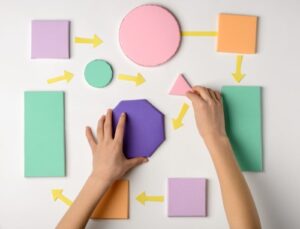7 Ways Arts and Crafts Help Child Development

Although some people view arts and crafts simply as fun activities for kids to enjoy, they can actually greatly contribute towards your child’s development. This is why so many elementary school projects and lessons include art in some way. It’s the perfect medium to teach kids how to express themselves while also reaping plenty of other benefits. Even if your children are participating in arts and crafts in school, you should make time at home to work on projects together like diamond painting or illustrating their own book. These activities will encourage you to bond and develop fundamental skills. Here are some other ways that the arts can impact your child.
- Help Develop Motor Skills
Children have to learn how to master their motor skills through practice. As a child is growing, they work on gross and fine motor skills. Gross motor skills refer to actions that require major muscle movements such as standing or walking, while fine motor skills are developed through smaller muscle movements like holding a pen or brushing your teeth. Arts and crafts involve the use of tools and utensils that can greatly improve your child’s ability to perform tasks that require fine motor skills.
Creative art activities such as diamond painting crafts emphasize precision and the use of tools like the bead applicator, which allows the crafter to place small faceted beads onto a grid that will create a mosaic design. Although you will probably have to help your child work on projects like this, it’s the perfect opportunity to fine-tune those muscle movements.
- Encourage Creativity
Creativity is key to everyone’s development because it makes us unique and helps to solve problems. Creativity is also a form of self-expression, presenting your feelings and emotions through a visual medium. Look for ways to support your child’s creativity by designating a time and space for their arts and crafts, as well as talking about their creations. As children grow older, they will face more complex and serious issues that they need to understand how to cope with, which is something that creativity can do. Using your imagination allows you to express yourself and your experiences. The earlier children begin to find ways to reflect on themselves and their feelings, the better equipped they will be in adulthood.

- Teach Communication
If you’re working on improving some of your child’s basic development skills through art, you should always ask a lot of questions about their project and their decision making. This further encourages them to think through what they are expressing and allows them to practice language. You can even turn this into a game by asking children to host their very own art exhibit. Hang some of their recent creations around the house and have your child lead you through the exhibit while explaining what each piece means and how they came up with the idea. This will sharpen their critical thinking and encourage them to use new, bigger words to describe their thoughts and actions.
- Express Themselves
One of the biggest advantages of participating in the arts is the ability to express yourself. Visual art can certainly allow children to do this, but so can other types of creative activities like writing. If your child loves books, work with them on writing their own book. They can create the plot, the characters and draw the illustrations. They can write a story about something that has happened to them personally or make up an original story.
- Understand Experiences
Art therapy is a fairly common method of helping people work through difficult or traumatic experiences. Although this is usually done with adults, it can be used with children who have experienced something serious. Ask your children to draw or write about something that has happened to them recently. When children relive their experiences and share, they are reflecting on life and learning how to value those memories or work through uncomfortable feelings like sadness or anger.
- Recognize Patterns and Solve Problems
Arts and crafts are also vital in teaching children how to recognize patterns and solve problems. They have to use their own thinking to figure out a way to express what they are trying to put down on paper. How can I show how much I love my mom? How can I turn construction paper into a flower? All of these questions are going through your child’s head when they create a work of art. This will help them solve more complex problems both in school and real life as they continue to develop. They may also learn how to solve problems like making the color pink with paint when you don’t have any pink paint, further encouraging their creative understanding as well.

- Help with Decision-Making
Art takes a great deal of critical thinking because children and adults must determine which materials they want to use and how best to convey their thoughts. The more your child learns to work with different types of art mediums, the more their decision-making process will develop. Try teaching them how to mix colors to create new ones or get creative with resources, such as turning everyday objects into art supplies or adding a different type of material to their painting.
The Importance of Art
Learning how to express yourself through art is an important lesson. Children receive many development benefits through their artwork, and it’s essential as a parent to foster this development. Introduce your child to new projects like diamond painting and different skills like color mixing or using a paintbrush. All of these activities will impact not only their motor skills but heir emotional and intellectual abilities.















